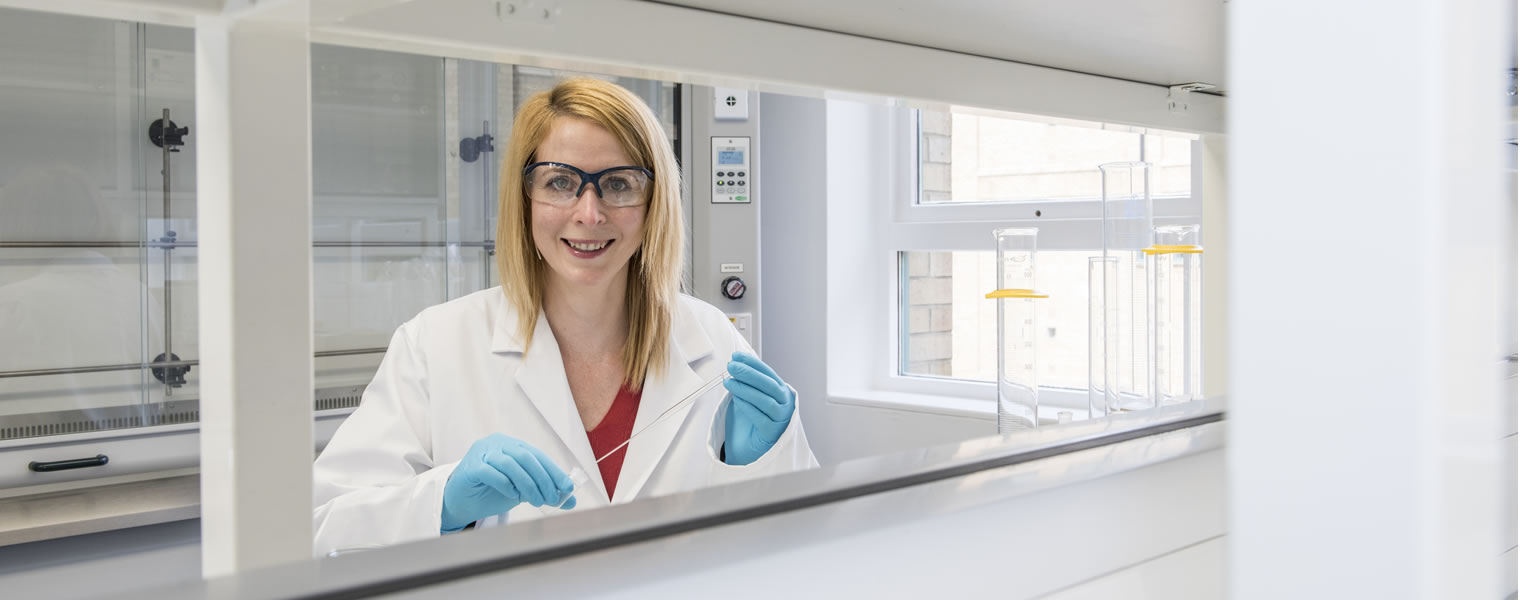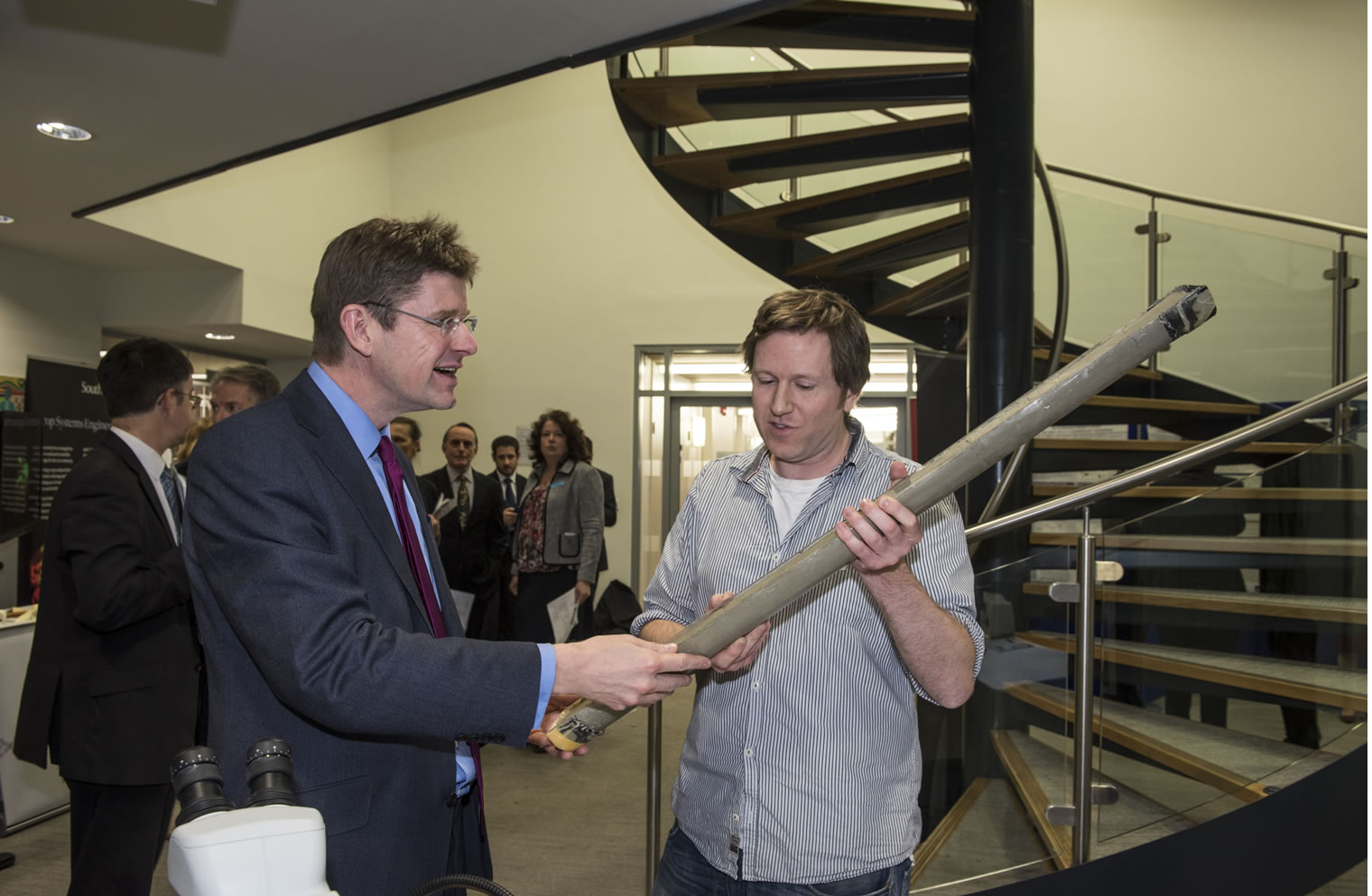Hartley News Online Your alumni and supporter magazine
How will climate change affect our planet’s environment in the future? Researchers at Southampton are looking to the Earth’s prehistoric past for answers.
Using chemical data extracted from ancient fossils of both shelly microorganisms and organic molecules, our researchers are reconstructing climate conditions during warmer periods in the planet’s history. The results are making an important contribution to the scientific community’s understanding of current and future climate systems.
Dr Jessica Whiteside, of Ocean and Earth Sciences’ Palaeoceanology and Palaeoclimate research group, explains: “The composition of these shelly and chemical fossils can tell us a lot about the microorganisms living at a particular time and provide a snapshot of the environmental conditions in which they lived. By analysing fossils that were deposited under conditions similar to those we are experiencing today, we can investigate the link between global warming and environmental change.”
One study is investigating the levels of carbon dioxide (CO2) in the atmosphere during the Pliocene epoch, 2.3 to 3.3 million years ago. Temperatures during this time were two to three degrees warmer than today, giving scientists a useful basis for understanding how the climate might change in the next few decades.
“Using data from this period we can estimate how the climate will respond to increasing levels of CO2, a parameter known as ‘climate sensitivity’,” says geochemist Professor Gavin Foster, who led the multinational study. “We know that the climate is getting warmer and that CO2 is the driving force behind this. What we’re not so sure about is how warm it will get. This is because, as the planet warms, other climate ‘feedbacks’ amplify the change – for example, thawing permafrost releases more methane into the atmosphere, adding to the warming effect. By studying past climate change we can investigate the possible effects of these hidden feedbacks.”
The results indicate that current global warming predictions are on a firm footing. “Our estimates of climate sensitivity lie well within the Intergovernmental Panel on Climate Change’s latest prediction of an increase of 1.5 to 4.5 degrees centigrade per doubling of CO2,” says Gavin. “This suggests that the research community has a sound understanding of what the climate will be like as we move towards a warmer future.”
The study’s data is based on chemical analysis of the calciferous shells of ancient plankton fossils, which are extracted from sediment cores collected by International Ocean Discovery Programme drill ships. The ratio of isotopes of the chemical element boron in the shells is affected by the concentrations of CO2 in seawater – by measuring this, it is possible to infer the levels of CO2 present in the atmosphere at the time when the plankton were alive. The boron isotope analysis techniques developed by Gavin are now being used by other research groups around the world.
Jessica’s research looks even further back in time to examine the link between global warming and extinction. “We have made important new findings about changes in ocean chemistry and environment during one of the planet’s five largest extinctions, the end-Triassic mass extinction, which occurred 201 million years ago,” she says.
During this period the supercontinent Pangaea was rifting apart to create what is now the Atlantic Ocean, an event accompanied by huge volcanic eruptions that released high levels of CO2 into the atmosphere. The very warm conditions that followed resulted in 50 per cent of life on earth becoming extinct.
Although previous studies have provided a picture of extreme environmental change on land and in shallow marine realms, Jessica and her team gained new insights into changes in open ocean ecosystems by analysing fossilised organic molecules, known as biomarkers, that are the residue of marine microorganisms. These were extracted from sedimentary rocks formed in what was once the north-eastern Panthalassic Ocean, now preserved off the coast of British Columbia.
The team found evidence of an interval approximately 600,000 years long during which surface waters of the ocean become devoid of oxygen and were poisoned by hydrogen sulphide, a by-product of anaerobic microorganisms that is extremely toxic to most forms of life. This disrupted the distribution of nutrients and altered food chains essential for the survival of marine ecosystems in this area.
“The findings present a compelling explanation for the loss of ocean biodiversity during this mass extinction, which is analogous to predicted consequences of global warming driven by increasing atmospheric CO2 levels in the near future,” says Jessica.
The techniques on which these projects rely are made possible by the University’s investment in cutting-edge facilities, which include capabilities for boron isotope analysis that are unique within the UK. “With the opening of dedicated new laboratory facilities, the SEAPORT Carbon Laboratories, the University has an unrivalled toolkit for the analysis of these very warm conditions that the Earth has experienced,” Jessica comments. “Using these tools we can help identify specific mechanisms of past global catastrophes and thus find clues to help mitigate future climate change.”





